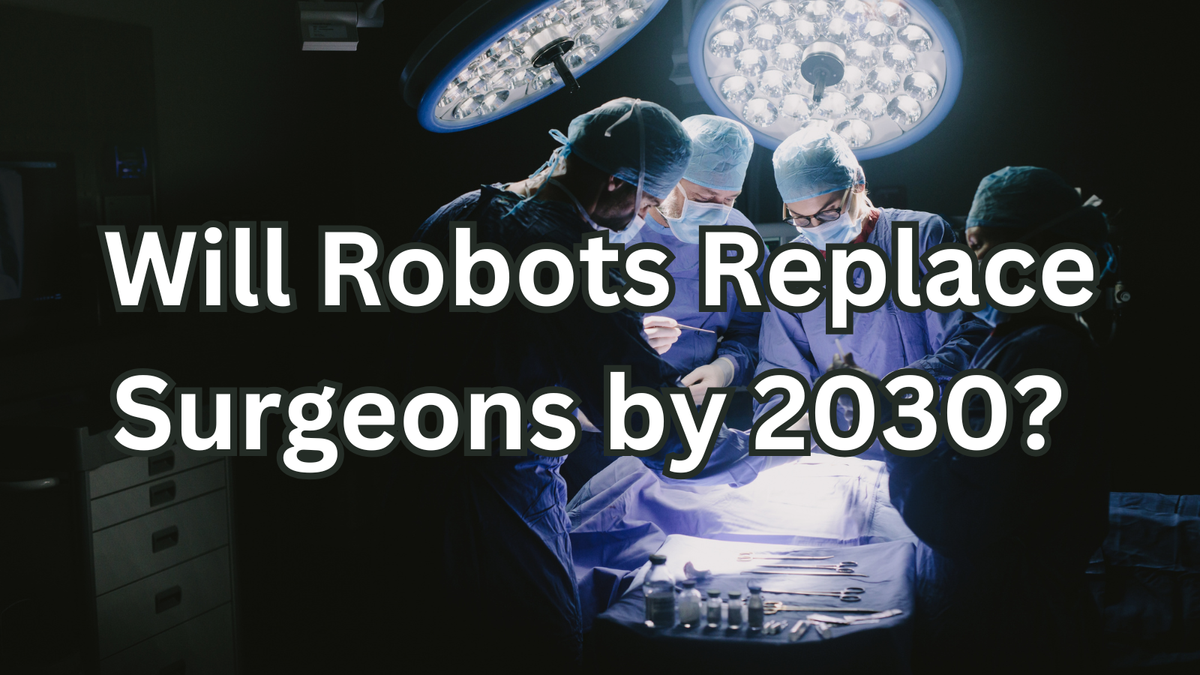Will Robots Replace Surgeons by 2030? Elon Musk Says Yes—Here’s Why

Elon Musk just declared that robots will outperform the best human surgeons within five years—and his Neuralink brain implants are proof of concept. In a recent X post, the billionaire claimed surgical robots will achieve superhuman precision, citing Neuralink’s own robotic systems that implant brain-computer interfaces (BCIs) in patients. But is this vision realistic—or just another Musk moonshot? Let’s dive in.
🤖 The Human Hand vs. Machine Precision: Why Surgeons Are on the Clock
Musk’s prediction hinges on one undeniable truth: robots already excel at tasks requiring microscopic accuracy. Here’s the breakdown:
- Neuralink’s Robot or Bust: The company’s surgical robot inserts electrodes thinner than a human hair into the brain—a feat “impossible for a human to achieve,” per Musk. Without it, their BCIs wouldn’t work.
- Early Successes (With Caveats): Neuralink’s first patient, Noland Arbaugh, controlled a computer cursor via thought—but 85% of the implant’s threads retracted post-surgery. The second patient, however, showed no retraction, suggesting rapid iteration.
- Beyond Brain Surgery: Tesla’s Optimus humanoid robots, though still in development, aim to handle “unsafe, repetitive, or boring” tasks, hinting at broader surgical applications.
- The 5-Year Countdown: Musk’s timeline aligns with Neuralink’s aggressive rollout—the company plans to implant devices in over 100 patients by 2026.

✅ The Robotic Surgery Revolution: What’s Coming Next
Musk isn’t alone in betting on robotic surgeons. Here’s how the tech could transform healthcare:
- ✅ Superhuman Precision: Robots like Neuralink’s avoid hand tremors and fatigue, enabling sub-millimeter accuracy for delicate procedures (e.g., neurosurgery, cataract operations).
- ✅ 24/7 Scalability: Unlike humans, robots don’t need sleep—critical for addressing global surgeon shortages (the WHO estimates a deficit of 15 million healthcare workers by 2030).
- ✅ AI-Powered Diagnostics: Pairing robots with real-time AI analysis could reduce errors. Imagine a machine cross-referencing a patient’s vitals with millions of case studies mid-surgery.
Key Players: Neuralink’s surgical robot is already FDA-approved for trials, while Intuitive Surgical’s da Vinci system (used in 1.2 million procedures annually) proves demand exists. Tesla’s Optimus could enter medical settings by 2027, per leaked internal docs.
🚧 The Hurdles: Why Robots Won’t Rule the OR Tomorrow
Despite progress, major challenges remain:
- ⚠️ Technical Glitches: Neuralink’s thread retraction issue highlights the risks of relying on unproven hardware. As GOP Sen. Mike Lee noted, “It’s like a win for humans—if it works.”
- ⚠️ Regulatory Nightmares: The FDA’s strict approval process for medical devices could slow adoption. Neuralink’s brain implants took 18 months to greenlight.
- ⚠️ Public Trust: A 2024 Pew Research study found only 35% of Americans would trust a robot-assisted surgery over a human surgeon.
- ⚠️ Cost Barriers: Da Vinci systems cost up to $4 million—far beyond most hospitals’ budgets.
🚀 Final Thoughts: Scalpels vs. Silicon—Who Wins?
Musk’s 5-year timeline feels optimistic, but the trajectory is clear. Success depends on:
- 📈 Solving Technical Flaws: Neuralink must eliminate hardware issues like thread retraction to ensure reliability.
- 📈 Regulatory Collaboration: Faster FDA pathways for AI-driven surgical tools could accelerate adoption.
- 📈 Cost Reduction: Mass production of systems like Optimus could lower prices, democratizing access.
One thing’s certain: the era of robotic surgery isn’t coming—it’s already here. But would YOU let a robot operate on your brain? Sound off below!
Let us know on X (Former Twitter)
Sources: Alex Nitzberg. Elon Musk predicts robots will outshine even the best surgeons within 5 years, April 28, 2025. https://www.foxbusiness.com/healthcare/elon-musk-predicts-robots-outshine-even-best-surgeons-within-5-years










